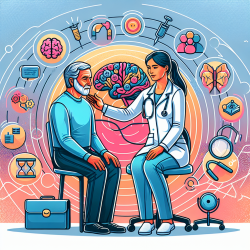The complexities of childhood-onset disorders such as schizophrenia, ADHD, and motor tic disorder present unique challenges for practitioners. Recent research has provided groundbreaking insights into the genetic underpinnings of these conditions, particularly through the study of isochromosome 13. This blog aims to equip practitioners with knowledge from this research to improve their practice and inspire further investigation.
Understanding the Genetic Landscape
The study titled "Isochromosome 13 in a patient with childhood-onset schizophrenia, ADHD, and motor tic disorder" offers a detailed exploration of the genetic anomalies associated with these conditions. The research highlights the presence of an isodisomic isochromosome 13 of paternal origin in a young female patient. This genetic configuration was linked to her diagnoses of schizophrenia at age nine, alongside ADHD and chronic motor tic disorder.
Karyotypic analysis revealed a 45,XX,i(13)(q10) karyotype in all cells examined. This finding suggests that the isochromosome likely formed post-zygotically by a short arm U-type or centromeric exchange. Although no overtly pathogenic mutations were identified in the DAOA and 5-HTR2A genes, homozygous risk polymorphisms were present.
Applying Research Insights to Practice
Practitioners can leverage these insights in several ways:
- Enhanced Diagnosis: Understanding genetic markers can aid in early diagnosis and intervention strategies tailored to individual genetic profiles.
- Targeted Therapies: Knowledge of specific genetic configurations can inform personalized treatment plans, potentially improving outcomes for patients with complex disorders.
- Collaborative Research: Engaging in or supporting further research can contribute to a broader understanding of these disorders and lead to innovative therapeutic approaches.
The Path Forward: Encouraging Further Research
The findings from this study underscore the importance of continued research into the genetic factors influencing childhood-onset disorders. Practitioners are encouraged to collaborate with researchers and participate in studies that explore the role of genetics in mental health conditions.
Moreover, exploring epigenetic mechanisms resulting from uniparental disomy (UPD) could provide additional insights into how these genetic anomalies manifest as clinical symptoms. Such research could pave the way for novel interventions that address both genetic and environmental factors.
To read the original research paper, please follow this link: Isochromosome 13 in a patient with childhood-onset schizophrenia, ADHD, and motor tic disorder.










